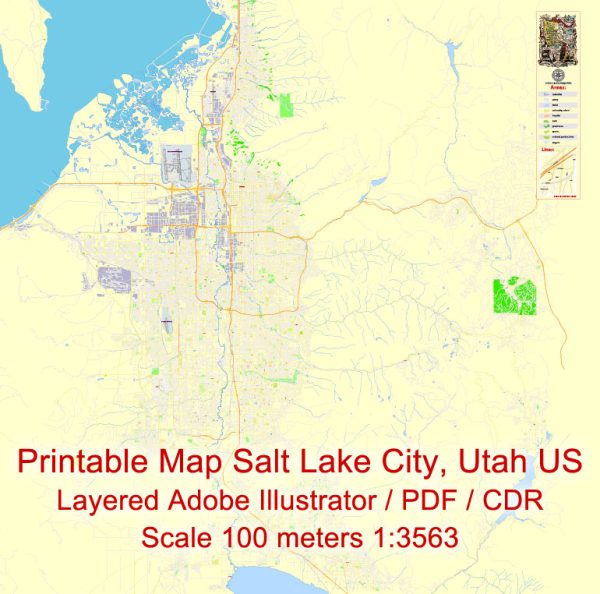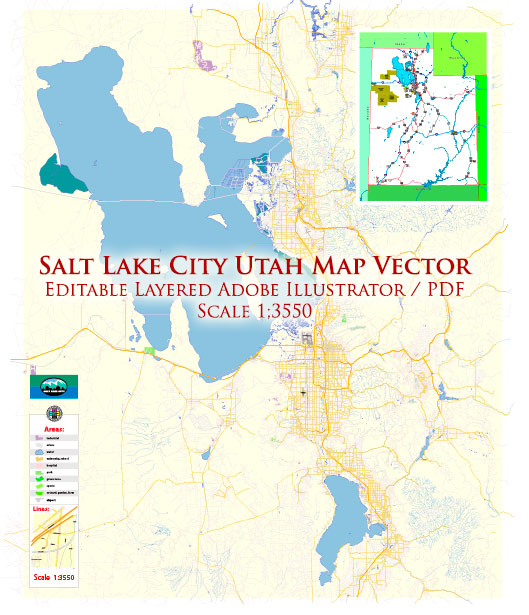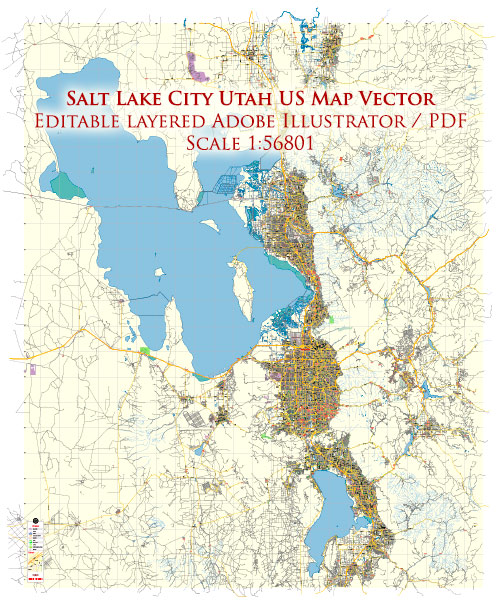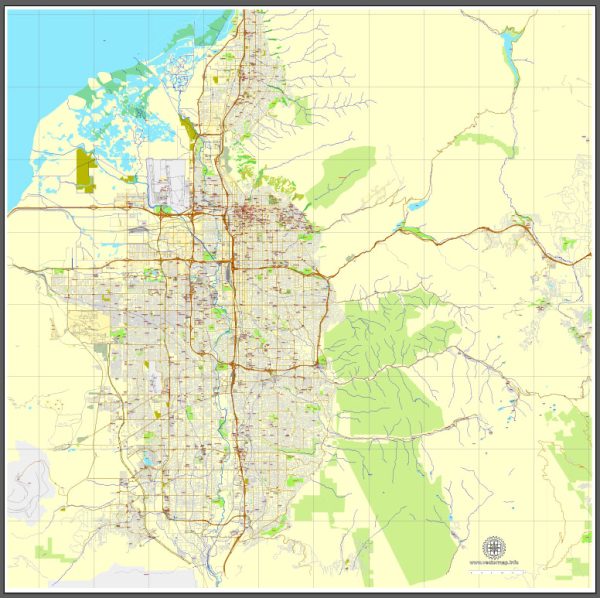Salt Lake City, the capital and largest city of Utah, has a rich history of urban development that reflects its unique cultural and geographical context. Here’s an overview of the city’s urban development history:
- Mormon Pioneer Settlement (1847): Salt Lake City was founded in 1847 by a group of Mormon pioneers led by Brigham Young. Seeking religious freedom, they established a settlement in the Salt Lake Valley. The city was designed in a grid pattern with wide streets, reflecting the vision of Brigham Young and the principles of the Church of Jesus Christ of Latter-day Saints (LDS Church).
- Planned Grid System: The city’s initial plan featured a grid system with streets oriented to the cardinal directions, making navigation relatively straightforward. The blocks were designed to be large, with ample space for agriculture within the city. This layout is still evident in the modern city, with its wide streets and numbered grid system.
- Economic Development (Late 19th Century): As the city grew, economic activities expanded beyond agriculture. Mining, particularly silver and lead mining in nearby mountains, contributed to the city’s economic development. The construction of the transcontinental railroad in 1869 further boosted economic growth and connectivity.
- Expansion of Infrastructure: In the late 19th and early 20th centuries, Salt Lake City saw the development of essential infrastructure, including public transportation, utilities, and public buildings. The city’s infrastructure was modernized to accommodate a growing population and support industrial and commercial activities.
- Post-World War II Growth: Like many American cities, Salt Lake City experienced significant growth in the post-World War II era. The population expanded, and suburbanization became a notable trend. This period saw the development of suburbs and the establishment of residential communities outside the city center.
- Olympic Winter Games (2002): The hosting of the 2002 Winter Olympics brought international attention to Salt Lake City. This event spurred urban revitalization efforts, including the construction of new sports facilities, infrastructure improvements, and the enhancement of the city’s overall aesthetic.
- Contemporary Urban Development: In recent decades, Salt Lake City has focused on sustainable urban development, including efforts to improve public transportation, promote mixed-use development, and enhance the city’s livability. The downtown area has seen significant revitalization, with the construction of new commercial and residential spaces.
- Cultural and Arts Scene: Salt Lake City has also invested in its cultural and arts scene, with the establishment of museums, theaters, and cultural events. The city’s diverse cultural offerings contribute to its appeal and vibrancy.
- Challenges and Opportunities: Like many growing cities, Salt Lake City faces challenges related to urban sprawl, transportation, and housing affordability. However, ongoing initiatives seek to address these issues through smart urban planning and sustainable development practices.
Salt Lake City’s history of urban development reflects a blend of religious, economic, and cultural influences. The city has evolved from its roots as a pioneer settlement into a modern, dynamic urban center with a strong sense of community and identity.





 Author: Kirill Shrayber, Ph.D.
Author: Kirill Shrayber, Ph.D.